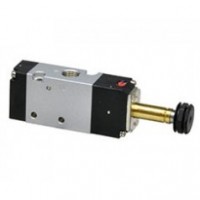The flow capacity of the valve is an indicator of the valve capacity under normal conditions. Our country is represented by C value. It is defined as: when the valve is fully open, when the pressure difference before and after the valve is 1 kg/cm 2, the medium weight is 1 g/cm 3
, the medium mass (m 3 / h) flowing through the valve per hour. For incompressible fluids, under sufficiently turbulent conditions (Re>10 5 for water if the Reynolds number is large enough; Re>5 for air. 5 x 10 4)
The flow capacity of a valve depends solely on its structure. When calculating the required flow capacity of the valve, it should be noted that the flow state in the valve will be very different when the medium is different or the flow condition is different.
In the case of low flow, especially viscous fluid and low pressure, the main constraint of the fluid is usually laminar flow or a mixture of laminar flow and turbulence. Laminar flow, the medium flow through the valve and the valve front and rear pressure is linear relationship. However, in the mixed state of laminar flow and turbulent flow, with the increase of Reynolds number, the medium mass flowing through the valve will increase even if the pressure difference remains unchanged. In perfect turbulence, the flow does not change with the Reynolds number. Nevertheless, the choice of small flow control valve, still with the traditional.












